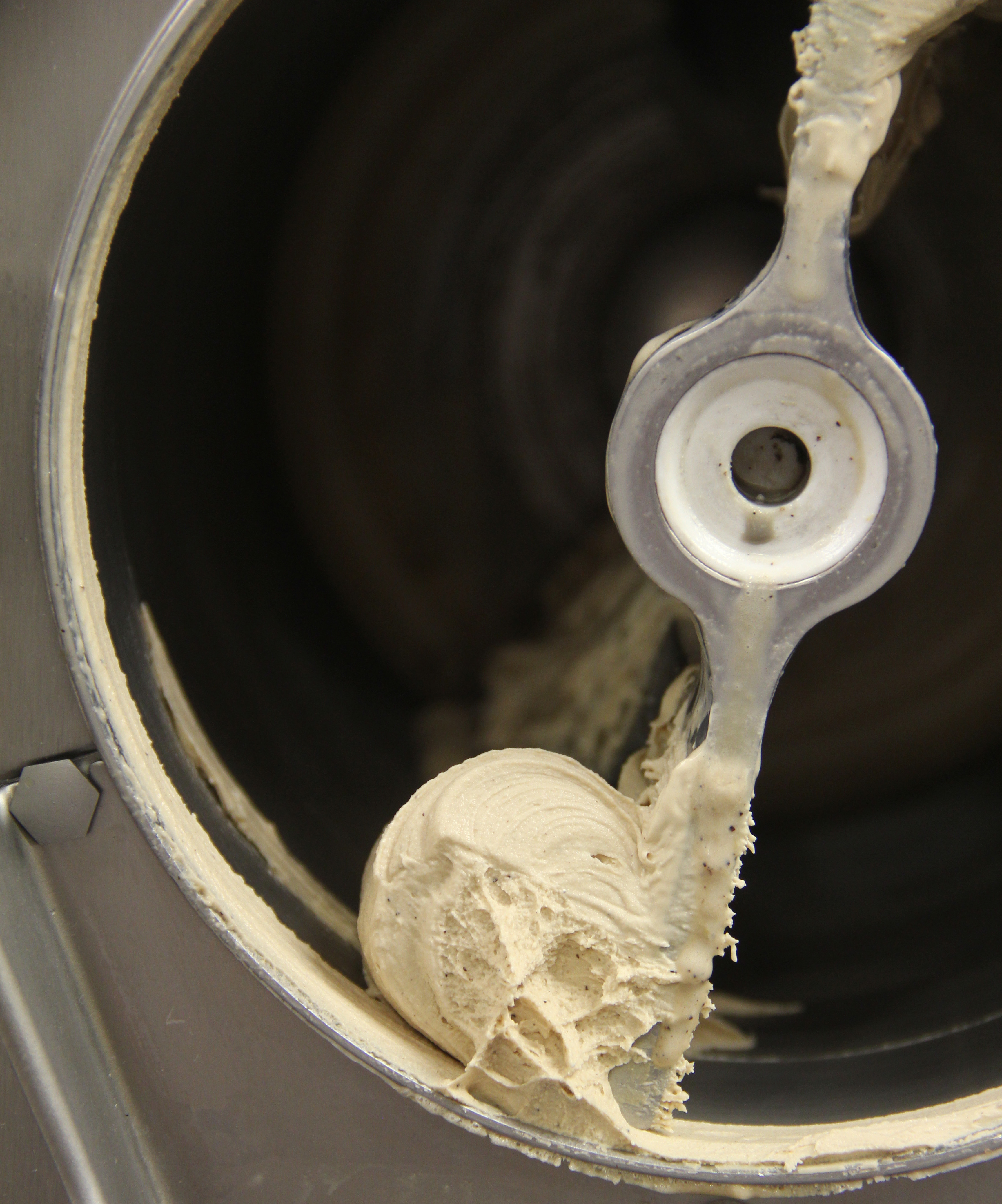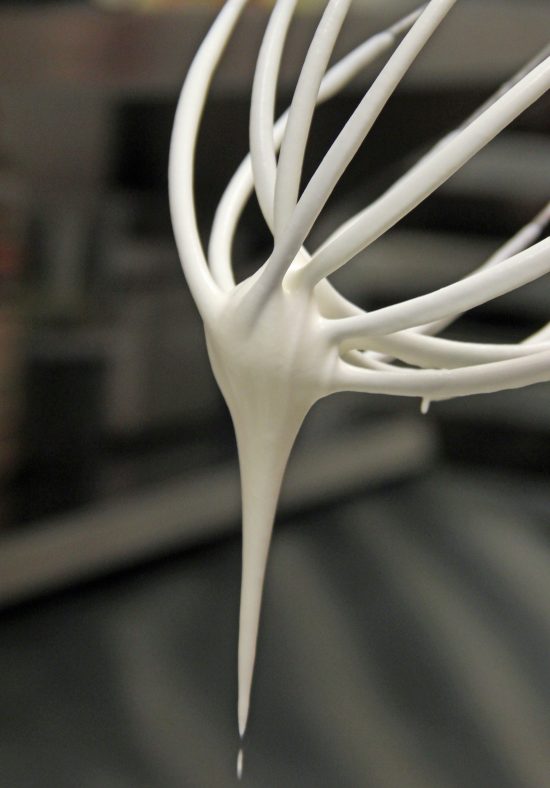Why I Tell Pastry Students 'Imagine Yourself as a Tiny Milk Fat Particle'
Much of my day-to-day work at ICE — in its kitchens and in the Chocolate Lab — revolves around unraveling the inner workings of ingredients, recipes and the finished preparations that result. This is an important aspect that all cooks consider on some level. Whether seeking to create inventive new dishes or perfect the classics, a pinch of food science will always help us achieve our goals.
As a pastry chef, one might say that I’m already hard-wired to think a bit deeper about the composition and function of ingredients. I like to say that the primary difference between a pastry chef and his or her savory counterpart is that success often relies upon some measure of predicting the future.
While a soup can be tasted and tweaked from start to finish, you can’t take a cake out of the oven halfway through the bake to add a bit more leavener. Cakes aside, it was my quest to better understand ice cream several years ago that led me down the path toward a more precise understanding of the many ingredients and processes a pastry chef seeks to master.

The words “food” and “science” no doubt conjure images of lab coats and beakers, or perhaps they evoke notions of “modernist” dishes with avant-garde flair.
Yet on a far more practical level, every act of cooking involves countless physical or chemical reactions that rely on time, temperature and the composition of ingredients.
Accordingly, we can all benefit from a bit of simple kitchen chemistry. Not only does such insight lead to better cooking skills, but it also helps us fix mistakes when they inevitably arise.
Though often a skill elusive to most cooks, a better understanding of these reactions can indeed lead to new creations. For me, it also became a new lens through which to view every ingredient and recipe I set out to execute.
Eventually, this way of thinking ultimately arms a cook with the ability to write a recipe from scratch, rather than merely rely on or follow someone else’s recipe.
My deep dive into ice cream on a technical level — through complex textbooks and scientific papers as well as working directly with a noted food scientist — greatly improved the quality of the ice cream I began to make.
With just a grasp of dairy composition, the properties of various sugars, freeze point depression and the physical mechanics of freezing, I am able to fine-tune a recipe to make a finished product with optimal flavor and texture. Milk itself, what for many is simply a ubiquitous ingredient used without much thought, suddenly becomes a fascinating substance when broken down into its constituent parts. Its water, fat, proteins and sugar play important and specific roles — not only in frozen desserts, but in every preparation it is used. And suddenly that knowledge base expands to other products derived from milk — cream, butter, cultured products and cheeses — and the myriad ways they function in our recipes.

I am lucky to share these specific insights with every student enrolled in the Pastry & Baking Arts program at ICE. During a guest lecture that I conduct in the early days of the students’ journey, I break down dozens of dairy products based on their composition and function. We taste them all in order to identify their similarities and their differences.
We conduct whipped cream exercises, in which I encourage students to imagine themselves shrunk down to the size of a tiny milk fat particle, to better understand how liquid cream transforms into a light fluffy foam and then, eventually, into butter. We make soft caramels, which demonstrate the effects of Maillard reactions, the dark and delicious result of milk proteins, lactose and heat.
Though I present a mountain of technical data on dairy products, the numbers and charts aren’t what’s important. The real goal is simply to get students thinking about their ingredients in this new light, along with a better understanding of the cause-and-effect of our cooking methods. This mindfulness can then be applied to anything — eggs, flour, sugar, chocolate, fruit and more.
So, yes, I am a certified dairy nerd, and a few times each year I get to bring these obsessions to a wider audience with single subject classes that zero in on milk, eggs, ice cream and more general aspects of baking “technology.” Just in time for warmer temperatures, I will deconstruct frozen desserts in Introduction to Ice Cream and Sorbet Technology this week, followed by Composition and Structure: The Humble Complexity of Milk in June. Later in the summer, I take on other vital aspects of food science and pastry applications with A Hydrocolloids Primer, Baking and Pastry Technology and Composition and Structure: A Scientific Approach to Cooking. Happy cooking — and learning!
Take your understanding of baking to the next level — click here for more information on ICE's Pastry & Baking Arts program

